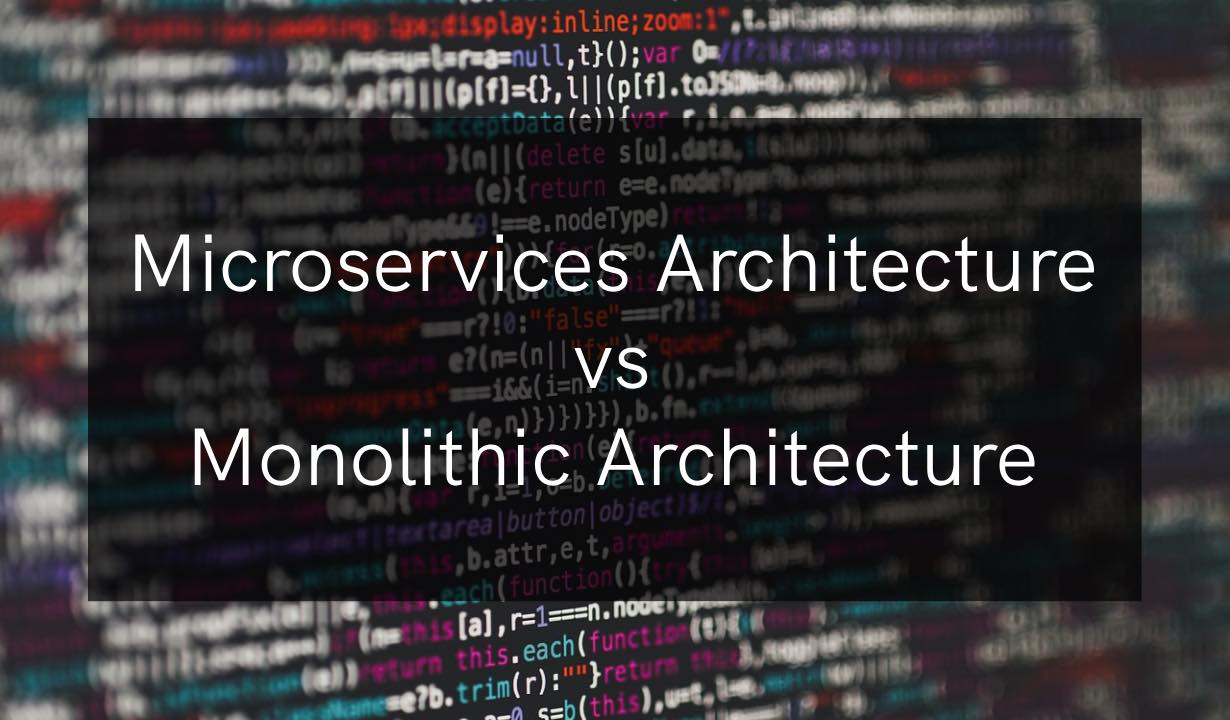
Navigating the Digital Future
As a tech enthusiast and determined consultant, I thrive on calculated risks. My background in technology has prepared me to navigate the digital landscape effectively.
Digital Transformation
Guiding the transition to digital processes, technologies, and systems for a modernized future.
Strategic Agility
Adapting swiftly to changing environments, ensuring resilience and success in dynamic conditions.
Seamless Integration
Harmonizing different technologies and platforms to create a cohesive and functional system.
About Me
Master of Many Trades
I’ve worn various hats, from Solution Architect to MLOPs/DevOps Engineer, Machine Learning Engineer, Blockchain Developer, Data Science Wizard, Software Alchemist, and Embedded & Hardware Sorcerer. My versatile experience is the result of a curious mind and a drive to push the boundaries of what’s possible.
Experience
Extensive experience in the field
Education
Master's in Electrical Communication Engineering
Full-Time or Freelance
Available
My Skills
I am a results-driven professional, excelling with dedication and expertise.
I've consistently demonstrated a results-oriented approach, guided by unwavering dedication and deep expertise. With a relentless pursuit of success, I'm driven to exceed expectations and achieve remarkable results in every endeavor I undertake.







Portfolio
Each project represents a unique journey of innovation and problem-solving. If you're inspired by what you see or have a project in mind, I'm ready to collaborate with you. Let's bring your ideas to life and make your vision a reality.

When you are stranger faces looks ugly
Duis aute irure dolor in reprehenderit in voluptate velit esse cillum dolore eu fugiat nulla pariatur. Lorem ipsum dolor sit amet, consectetur adipisicing elit, sed do eiusmod tempor incididunt ut labore et dolore magna aliqua. Ut enim ad minim veniam, quis nostrud exercitation ullamco laboris nisi ut aliquip ex ea commodo consequat. Excepteur sint occaecat cupidatat non proident, sunt in culpa qui officia deserunt mollit anim id est laborum.
Duis aute irure dolor in reprehenderit in voluptate velit esse cillum dolore eu fugiat nulla pariatur. Excepteur sint occaecat cupidatat non proident, sunt in culpa qui officia deserunt mollit anim id est laborum.
- Project Type: Graphic Design
- Client: Juwel Khan
- Duration: 2 Weeks
- Task: UI/UX, Frontend
- Budget: $2000

So close no matter how far
Duis aute irure dolor in reprehenderit in voluptate velit esse cillum dolore eu fugiat nulla pariatur. Lorem ipsum dolor sit amet, consectetur adipisicing elit, sed do eiusmod tempor incididunt ut labore et dolore magna aliqua. Ut enim ad minim veniam, quis nostrud exercitation ullamco laboris nisi ut aliquip ex ea commodo consequat. Excepteur sint occaecat cupidatat non proident, sunt in culpa qui officia deserunt mollit anim id est laborum.
Duis aute irure dolor in reprehenderit in voluptate velit esse cillum dolore eu fugiat nulla pariatur. Excepteur sint occaecat cupidatat non proident, sunt in culpa qui officia deserunt mollit anim id est laborum.
- Project Type: Graphic Design
- Client: Juwel Khan
- Duration: 2 Weeks
- Task: UI/UX, Frontend
- Budget: $2000

She’s got a smile that seems to me
Duis aute irure dolor in reprehenderit in voluptate velit esse cillum dolore eu fugiat nulla pariatur. Lorem ipsum dolor sit amet, consectetur adipisicing elit, sed do eiusmod tempor incididunt ut labore et dolore magna aliqua. Ut enim ad minim veniam, quis nostrud exercitation ullamco laboris nisi ut aliquip ex ea commodo consequat. Excepteur sint occaecat cupidatat non proident, sunt in culpa qui officia deserunt mollit anim id est laborum.
Duis aute irure dolor in reprehenderit in voluptate velit esse cillum dolore eu fugiat nulla pariatur. Excepteur sint occaecat cupidatat non proident, sunt in culpa qui officia deserunt mollit anim id est laborum.
- Project Type: Graphic Design
- Client: Juwel Khan
- Duration: 2 Weeks
- Task: UI/UX, Frontend
- Budget: $2000

When the musics over turn off the light
Duis aute irure dolor in reprehenderit in voluptate velit esse cillum dolore eu fugiat nulla pariatur. Lorem ipsum dolor sit amet, consectetur adipisicing elit, sed do eiusmod tempor incididunt ut labore et dolore magna aliqua. Ut enim ad minim veniam, quis nostrud exercitation ullamco laboris nisi ut aliquip ex ea commodo consequat. Excepteur sint occaecat cupidatat non proident, sunt in culpa qui officia deserunt mollit anim id est laborum.
Duis aute irure dolor in reprehenderit in voluptate velit esse cillum dolore eu fugiat nulla pariatur. Excepteur sint occaecat cupidatat non proident, sunt in culpa qui officia deserunt mollit anim id est laborum.
- Project Type: Graphic Design
- Client: Juwel Khan
- Duration: 2 Weeks
- Task: UI/UX, Frontend
- Budget: $2000

Come on babe light my fire
Duis aute irure dolor in reprehenderit in voluptate velit esse cillum dolore eu fugiat nulla pariatur. Lorem ipsum dolor sit amet, consectetur adipisicing elit, sed do eiusmod tempor incididunt ut labore et dolore magna aliqua. Ut enim ad minim veniam, quis nostrud exercitation ullamco laboris nisi ut aliquip ex ea commodo consequat. Excepteur sint occaecat cupidatat non proident, sunt in culpa qui officia deserunt mollit anim id est laborum.
Duis aute irure dolor in reprehenderit in voluptate velit esse cillum dolore eu fugiat nulla pariatur. Excepteur sint occaecat cupidatat non proident, sunt in culpa qui officia deserunt mollit anim id est laborum.
- Project Type: Graphic Design
- Client: Juwel Khan
- Duration: 2 Weeks
- Task: UI/UX, Frontend
- Budget: $2000

Website design for Rainy Design
Duis aute irure dolor in reprehenderit in voluptate velit esse cillum dolore eu fugiat nulla pariatur. Lorem ipsum dolor sit amet, consectetur adipisicing elit, sed do eiusmod tempor incididunt ut labore et dolore magna aliqua. Ut enim ad minim veniam, quis nostrud exercitation ullamco laboris nisi ut aliquip ex ea commodo consequat. Excepteur sint occaecat cupidatat non proident, sunt in culpa qui officia deserunt mollit anim id est laborum.
Duis aute irure dolor in reprehenderit in voluptate velit esse cillum dolore eu fugiat nulla pariatur. Excepteur sint occaecat cupidatat non proident, sunt in culpa qui officia deserunt mollit anim id est laborum.
- Project Type: Graphic Design
- Client: Juwel Khan
- Duration: 2 Weeks
- Task: UI/UX, Frontend
- Budget: $2000
Services
These are just a few of the services I offer. My goal is to provide innovative solutions that address your unique needs. Let's explore how we can collaborate to achieve your tech goals.

Web and Mobile Apps
Crafted web and mobile applications for seamless user experiences.
Artificial Intelligence (AI)
Harnessing artificial intelligence for data-driven insights.
Internet of Things (IoT)
Enabling smart devices to connect and exchange data.
Solutions Architect
Architecting tailor-made solutions for complex challenges.
Chatbots
AI-powered chatbots for automated customer interactions.
Blockchain Development
Exploring the potential of blockchain technology.
Website Development
Expertly crafted websites tailored to your brand.
Cloud Migration
Efficiently migrate to cloud for scalability and cost-effectiveness.
Why work with me
Excellence delivered with user centricity
Experience the Difference
Choosing to work with me means experiencing a unique blend of expertise, innovation, and dedication. I'm committed to delivering outstanding results and driving your success.
Tech Excellence, Delivered
Opt for my dedication to tech excellence and a track record of exceeding expectations. Together, we'll achieve your goals and surpass your aspirations.
Innovate with Confidence
I'm not just a consultant; I'm your dedicated partner for tech success. Together, we'll navigate challenges, seize opportunities, and achieve remarkable results.
Testimonials
As you explore these testimonials, you'll gain insights into the experiences of those who have witnessed my dedication, innovation, and problem-solving skills firsthand. Together, we've embarked on remarkable journeys, and their stories reflect the value I've created.
I had technical multiple discussions with Zaiban over Machine Learning algorithms and integration of ML/AI into engineering domain complex processes. I found Zaiban very strong theoretically and his approach to solve complex real life problems was always very convincing.

I was able to experience Zaiban as a very proactive, creative and focused developer. He always allowed his own ideas to flow into the development process, trained himself beyond his area of responsibility and in this way was able to positively influence the skill development of the team. For these reasons, I can highly recommend Zaiban for any type of professional high-tech development organization.

I experienced Zaiban Ali as a highly dedicated and capable employee. He puts a lot of emphasis in trying to reach the best solution for the tasks assigned to him. He worked self-contained and quickly as well as contributes his own ideas, which he justifies in a well-founded way. Without exception, I was able to rely on receiving needed results in time and quality. He also showed that he can learn quickly and get acquainted easily with previously unknown topics and programming tools.

Zaiban was part of my team when he was a working student at doks., although the title of working student definitely didn't do him justice, as you could hardly tell any difference from a permanent employee. No matter how complex or time-critical a task was, I never had a bad feeling when I entrusted it to Zaiban. His creativity, sense of responsibility and commitment regularly meant that he not only met, but exceeded the expectations placed in him. Everyone is lucky to have him on their team, I certainly was!

Zaiban is a true tech polymath. We've worked on various projects together, from machine learning to blockchain, and his problem-solving skills are nothing short of brilliant. His approach to real-world challenges is always spot-on.
We both hold certifications in cloud technology, and I can say with confidence that his expertise in this field is exceptional. He's not just certified; he's a true authority, and his guidance has been invaluable.
Our collaboration with Zaiban on integrating AI into complex engineering processes was a revelation. His theoretical strength and practical approach made the integration seamless, and the results spoke for themselves.
Zaiban is the embodiment of DevOps excellence. His dedication to bridging the gap between development and operations is remarkable. His solutions are not just efficient; they're transformative.
Working with Zaiban in a project has been a true pleasure. His dedication, high-quality work, and ability to quickly grasp complex topics have made a significant impact. Zaiban consistently goes above and beyond.
From My Blog
Delve into industry insights and tech innovations

Navigating DevOps: An In-Depth Look at Key Monitoring Tools
In the world of DevOps, continuous monitoring is a critical practice. It involves collecting and analyzing data from various stages of the DevOps lifecycle to increase efficiency, identify potential issues, and ensure smooth operations. To achieve this, many tools have been developed to provide real-time insights and metrics. Let’s take a look at some crucial monitoring tools in DevOps.
Prometheus
Prometheus is a robust open-source monitoring solution that collects multi-dimensional data from microservices, containers, and about hardware usage in real-time. It provides a flexible query language to leverage its collected time-series data. Prometheus fits well into the DevOps ethos as it supports many charting service dashboard tools like Grafana.
Grafana
Although Grafana is primarily known as a visualization tool, it plays a significant role in DevOps monitoring. Grafana integrates seamlessly with Prometheus and other data sources to provide insightful visualizations. It helps you create, explore, and share dashboards with your team, fostering a culture of transparency and data-driven decisions.
Nagios
Nagios is one of the pioneers in the IT infrastructure monitoring landscape. With Nagios, you can keep records of events, outages, and failures. It also offers complete monitoring and alerting for servers, switches, applications, and services. Nagios provides a comprehensive monitoring environment, with options for plug-ins and extensions to tailor to specific use cases.
ELK Stack
The ELK Stack, which stands for Elasticsearch, Logstash, and Kibana, is a suite of powerful open-source tools for log monitoring and analytics. Elasticsearch stores and searches large volumes of logs. Logstash collects and transforms logs, and Kibana visualizes data with charts and graphs. Together, they provide a real-time, insightful, and interactive view of what’s happening inside your systems and applications.
Datadog
Datadog is a SaaS-based monitoring and analytics platform that provides full observability across your applications, infrastructure, and logs. It’s well-suited for cloud-native environments with its ability to auto-discover and monitor containers and microservices. With its unified, real-time dashboard, Datadog is excellent for teams seeking to speed up troubleshooting and improve operational efficiency.
Splunk
Splunk is a comprehensive monitoring tool that specializes in analyzing machine-generated data. It can collect and analyze high volumes of data from different sources, providing insights via dashboard visualizations, reports, and alerts. Splunk is particularly good at handling and making sense of big data, making it a valuable tool in the DevOps toolkit.
Zabbix
Zabbix is an open-source monitoring tool known for its ability to monitor a vast array of network parameters, server health, and application states. It offers real-time monitoring of thousands of metrics, making it ideal for large-scale deployments. Zabbix’s strong capacity for data visualization, problem detection, and notification make it a popular choice in many DevOps environments.
New Relic
New Relic is a powerful observability platform that gives you actionable insights to software performance and the customer experience. It offers real-time analytics that help developers identify and diagnose complex performance problems faster. New Relic’s application performance monitoring (APM) tool is particularly popular for its detailed performance metrics for various web applications.
SolarWinds
SolarWinds is a comprehensive suite of IT operations management tools that enable you to monitor, troubleshoot, and optimize your IT infrastructure. From network performance monitoring to server and application monitoring, SolarWinds provides a vast array of tools that cater to various aspects of a DevOps environment. It offers an easy-to-use, intuitive interface that allows you to view your entire IT environment from a single pane of glass.
Dynatrace
Dynatrace offers an all-in-one solution covering application performance monitoring, cloud infrastructure monitoring, and digital experience monitoring. It leverages artificial intelligence to automatically discover, map, and monitor applications, their dependencies, and the underlying infrastructure. Dynatrace’s ability to analyze complex, dynamic environments makes it a valuable tool in the DevOps toolchain.
Sensu
Sensu is a robust monitoring tool designed for multi-cloud environments. It provides a comprehensive observability solution that is highly scalable and flexible. Sensu’s pipeline architecture allows you to collect, filter, transform, and deliver monitoring events as per your needs. It’s an excellent tool for businesses seeking to automate their monitoring workflows.
AppDynamics
AppDynamics, a part of Cisco, provides an application performance management solution that allows you to monitor, correlate, analyze, and act on application and business performance data in real time. It offers end-to-end visibility of your business transactions, enabling you to identify and resolve issues before they impact your customers.
OpsGenie
OpsGenie, now a part of Atlassian, is an advanced incident management platform that ensures critical incidents are never missed, and that actions are taken swiftly. It provides rich features like alerting, on-call management, escalation policies, and incident response orchestration. OpsGenie integrates well with other monitoring tools, making it an essential part of the DevOps toolchain.
PagerDuty
PagerDuty is an incident management platform designed for DevOps teams. It offers reliable notifications, automatic escalations, on-call scheduling, and other functionality to help teams detect and fix infrastructure problems quickly. Its robust integrations ensure it works seamlessly with almost any operations environment.
Amazon CloudWatch
Amazon CloudWatch is a native AWS monitoring tool that provides data and actionable insights for AWS, hybrid, and on-premises applications and infrastructure resources. With CloudWatch, you can collect and track metrics, collect and monitor log files, and respond to system-wide performance changes. It’s particularly useful for businesses heavily invested in the AWS ecosystem.
Google Stackdriver
Google Stackdriver offers performance insights into applications and infrastructure running on Google Cloud Platform and AWS. It allows monitoring, logging, and diagnostics. Stackdriver provides visibility into the performance, uptime, and overall health of cloud-powered applications, making it a good choice for businesses operating in a cloud environment.
Icinga
Icinga is an open-source computer system and network monitoring application. It checks the availability of your network resources, notifies users of outages, and generates performance data for reporting. Scalable and extensible, Icinga can monitor large, complex environments across multiple locations.
Conclusion
Monitoring plays a crucial role in the DevOps landscape, providing essential insights for maintaining prime application and infrastructure performance, swiftly identifying and addressing potential issues, and ensuring smooth operations. The choice of an appropriate monitoring tool is influenced by various factors, including the specific requirements of your environment, the scale of your operations, and the complexity of your systems.
From the powerful data collection of Prometheus to Grafana’s impressive visualization, Nagios’s complete infrastructure monitoring, the ELK stack’s log management, Datadog’s comprehensive observability, Splunk’s big data handling capabilities, Zabbix’s large-scale deployment capabilities, New Relic’s application-focused performance metrics, SolarWinds’ IT operations management, Dynatrace’s AI-driven monitoring, Sensu’s multi-cloud monitoring, AppDynamics’ business-oriented approach, OpsGenie’s advanced incident management, PagerDuty’s reliable notifications, Amazon CloudWatch’s AWS-centric monitoring, Google Stackdriver’s cloud performance insights, and Icinga’s open-source network monitoring – each tool offers unique capabilities.
Understanding these monitoring tools allows you to make an informed decision to choose the tool that best fits your DevOps environment, helping in the creation and maintenance of reliable, efficient, and high-quality software systems. In the ever-evolving world of software development, staying updated with these tools enables developers and architects to craft solutions that effectively meet business needs, adapt to changes, and stand the test of time.

Exploring Software Architecture Design Patterns: A Comprehensive Guide
Software architecture design patterns are fundamental models or templates that software developers and architects use to create scalable, maintainable, and reliable software systems. These patterns provide solutions to recurring problems encountered during software development and are pivotal in ensuring effective and efficient software design. This blog post will delve into the world of software architecture design patterns, discussing some of the most common patterns and how they can be applied.
Monolithic Architecture
Monolithic architecture is one of the traditional software design patterns, where all the components of a software system are interconnected and dependent on each other. The entire software system is treated as a single, indivisible unit, which can be advantageous for small, simple applications.
However, as the application grows in complexity, managing and updating a monolithic system can become challenging. Changes made to a single component might necessitate redeploying the entire application, and scaling specific features can be difficult due to the tightly-coupled nature of the components.
Microservices Architecture
In contrast to monolithic architecture, microservices architecture breaks an application down into small, loosely coupled services. Each service corresponds to a business functionality and can be developed, deployed, and scaled independently.
Microservices offer flexibility, scalability, and the ability to use different technologies for different services. However, they also introduce complexity in terms of service coordination, data consistency, and network communication.
Service-Oriented Architecture (SOA)
Service-Oriented Architecture (SOA) is a design pattern that organizes an application as a collection of services that communicate over a network. These services are reusable, interoperable, and technology-agnostic.
SOA is similar to microservices architecture, but it focuses more on reusable services that can be shared across different applications. While SOA promotes reusability and modularity, it can also introduce complexity in terms of service orchestration and governance.
Event-Driven Architecture (EDA)
In an Event-Driven Architecture (EDA), components communicate with each other through events. An event is a change in state that triggers communication between services.
EDA is highly scalable and allows for loose coupling between services, making it ideal for real-time, asynchronous systems. However, it can also lead to complex chains of events that may be difficult to manage and debug.
Layered (N-tier) Architecture
The Layered or N-tier architecture pattern organizes components into horizontal layers, each with a specific role. Common layers include presentation, business logic, and data access layers.
This pattern promotes separation of concerns, making the system easier to manage and update. However, changes can still impact multiple layers, and improper layering can lead to high coupling and low cohesion.
Serverless Architecture
Serverless architecture is a software design pattern where applications are developed and run in third-party environments, eliminating the need for server software and hardware management. In this model, developers can focus solely on writing the code, with the infrastructure management handled by cloud providers.
Serverless architecture can automatically scale applications based on demand, and you only pay for the compute time you consume, making it cost-effective. However, testing and debugging serverless applications can be challenging, and this model may not be suitable for applications with high computational requirements due to potential latency issues.
Peer-To-Peer (P2P) Architecture
The Peer-to-Peer (P2P) architecture pattern is a decentralized model where each node, or “peer”, in the network acts as both a client and a server. This pattern is commonly used in blockchain technologies and file-sharing services.
P2P architecture is robust and scalable, as there is no single point of failure and the system can handle an increasing number of nodes. However, it can be challenging to implement security measures in a P2P system due to its decentralized nature.
Model-View-Controller (MVC) Pattern
The Model-View-Controller (MVC) pattern is a software design pattern commonly used in web application development. It divides an application into three interconnected components: the Model represents the application data, the View displays the data, and the Controller handles input and updates the Model and View accordingly.
The MVC pattern promotes organized and modular code, making it easier to maintain and update. However, for complex applications with a large number of views and controllers, the MVC pattern can become complicated and difficult to manage.
Domain-Driven Design (DDD)
Domain-Driven Design (DDD) is an approach to software development that prioritizes the ‘domain’, or the sphere of knowledge and activity around which the application revolves. It involves creating a rich model of the domain, encapsulating the domain’s rules and logic within the design.
DDD can lead to software that accurately reflects the business domain, making it more intuitive and easier to modify in response to business changes. However, DDD can be overkill for simple applications, and it requires a deep understanding of the domain, which can be time-consuming to acquire.
Hexagonal Architecture
Hexagonal Architecture, also known as Ports and Adapters, is a pattern that encourages the separation of concerns by encapsulating core business logic inside a metaphorical hexagon. External events and data, such as user inputs or database calls, are treated as ‘outside’ the hexagon and interact with the business logic via ports and adapters.
This pattern is excellent for isolating the business logic from external changes, such as shifting from a relational to a NoSQL database, or changing the user interface technology. However, it may lead to increased complexity due to the number of abstractions involved.
CQRS (Command Query Responsibility Segregation) Pattern
CQRS is an architectural pattern where the model for updating data (Command) is separated from the model for reading data (Query). This separation allows for independent scaling, optimization, and complexity management of the two models.
CQRS can increase performance, scalability, and security since the read and write operations can be secured and optimized separately. However, it can also add unnecessary complexity if your application doesn’t have a significant disparity between reads and writes or doesn’t require complex business logic.
Event Sourcing Pattern
Event Sourcing is a pattern where state changes are stored as a sequence of events. Instead of only storing the current state of the data in the domain, we also store the sequence of actions that led to that state.
This pattern provides excellent audit logging and historical state analysis. It also allows for temporal queries and can resolve conflicting updates. However, it might add complexity to the system, especially when dealing with large amounts of events and event replays.
Onion Architecture
Onion Architecture is like Hexagonal Architecture in terms of its emphasis on separation of concerns and isolation of the domain logic. The software is developed in concentric layers, with the domain model at the center, surrounded by application services and then by the UI and infrastructure services.
Onion Architecture is excellent for maintainability and testability since it reduces dependencies between the layers. However, like Hexagonal Architecture, it might lead to increased complexity due to the number of abstractions.
Conclusion
Software architecture design patterns offer a roadmap for structuring and organising software systems. From Monolithic to Microservices, Serverless to P2P, MVC to DDD, and Hexagonal to Onion Architecture, each pattern provides unique benefits and addresses specific challenges in software development.
Understanding these patterns is crucial for software developers and architects. It aids in creating software systems that are not only efficient, scalable, and maintainable but also align with business requirements. The choice of architecture depends on the specific needs and constraints of the project – whether it’s the simplicity of Monolithic, the flexibility of Microservices, the robustness of P2P, the business alignment of DDD, the isolation of Hexagonal, or the maintainability of Onion Architecture.
However, it’s important to remember that each pattern comes with its trade-offs. Some might add complexity or require a deep understanding of the business domain, while others may pose challenges in terms of scalability, performance, or testing. Thus, a careful evaluation of the project’s requirements, the team’s expertise, and the system’s future evolution should guide the selection of the appropriate architectural pattern.
In the ever-evolving landscape of software development, staying abreast of these architectural patterns empowers developers and architects to craft software systems that can effectively meet business needs, adapt to changes, and stand the test of time.

Understanding Microservices: A Comparison with Monolithic Architecture
Microservice architecture is a software design model that breaks up an application into smaller, self-contained units, known as microservices, rather than developing a comprehensive, singular program. These microservices are each assigned a specific function or service.
For example, in an e-commerce application, distinct functionalities such as user management, product catalog, shopping cart, order management, and payment processing might be arranged as separate microservices. Each of these manages a specific function within the application, such as user authentication, product details, or payment transactions. Splitting the application into smaller services improves maintainability, fault isolation, and enhances development efficiency.
However, adopting a microservice architecture comes with its own set of challenges such as managing inter-service communication, ensuring data consistency, and addressing potential network issues. Therefore, organizations need to invest in the right operational, monitoring, and infrastructure practices.
Microservices are particularly beneficial for complex systems with evolving requirements due to their scalability, adaptability, and potential to increase productivity.
Exploring Microservices Architecture
In a microservice architecture, an application is divided into small, independent services that are loosely connected. Each microservice focuses on a specific business function and can be independently developed, deployed, and scaled.
Key features of a microservice architecture include service independence, single responsibility, decentralized governance, API-based communication, autonomous deployment, scalability and resilience, technology diversity, and alignment with continuous delivery principles.
Microservices can operate independently using different data storage and technology platforms. They communicate with each other via APIs, messaging queues, or lightweight protocols, ensuring loose coupling. Microservices facilitate quick releases, continuous delivery practices, and support a variety of technologies, but managing connectivity and ensuring data consistency can be challenging.
The Concept of Monolithic Architecture
The term “monolithic” refers to a traditional software architecture model where an application is built as a single, unified entity. In a monolithic design, all features and components of an application are closely interconnected and operate as a single, integrated unit.
Consider an e-commerce application as an example of a monolithic architecture. Here, all features such as user management, product catalog, shopping cart, and payment processing are developed within a single codebase. These functions are interconnected and share the same resources and database in a monolithic design.
While monolithic architectures are suitable for smaller applications with limited scaling and functionality needs, as systems become more complex or require scalability and flexibility, alternative patterns like microservices can be more effective.
Understanding Monolithic Architecture
Monolithic architecture is a conventional software design style where an application is crafted as a single, cohesive unit. All of the application’s features and components are tightly integrated within a single codebase and execution environment.
For a simple web-based e-commerce application, the application software includes distinct modules for features such as user management, product catalog, shopping cart, and payment processing. In a monolithic architecture, all these modules and components are merged and deployed as a single unit. This means that even if just one feature requires scalability or modification, the entire application must be redeployed.
Monolithic architectures are suitable for smaller applications with specific functional requirements and limited scaling needs. However, for more complex applications requiring flexibility and scalability, alternative architectural styles like microservices may be more suitable.
The Significance of Containers in Microservices
In microservices, containers play a crucial role in deploying and managing services. They provide isolation between microservices and their dependencies ensuring security and fault isolation. Containers also enable portability, allowing microservices to be deployed across different platforms and infrastructures.
By encapsulating all necessary runtime environments and libraries within each microservice’s container, they simplify dependency management. Containers also support autonomous replication and scaling of microservices, enhancing resource utilization and cost-efficiency. Furthermore, they ensure consistency across development, testing, and production environments, increasing reliability.
Container orchestration platforms like Kubernetes simplify the management of multiple containers in a microservices architecture by automating tasks like load balancing, service discovery, and health monitoring. In essence, containers streamline the deployment, scaling, and management of microservices, improving operational efficiency and enabling businesses to successfully develop, deploy, and scale their applications.
Delving into Microservices Design Patterns
The choice of design pattern in a microservice system depends on the system’s requirements and characteristics. Below are some design patterns available in microservices:
Distributed Design Pattern
This pattern involves the creation of microservices that can be deployed across multiple servers or nodes. It provides scalability, fault tolerance, and flexible deployment options.
Single Node Container Pattern
This technique focuses on deploying multiple microservices within a single container. It simplifies resource management and deployment by hosting numerous microservices in a single container.
Sidecar Pattern
The sidecar pattern connects a secondary microservice container to an existing container. It enhances functionality without modifying the original container.
Multi-node Container Pattern
This pattern is used when one microservice needs to be distributed across multiple nodes or servers. It allows for resource management and horizontal scaling.
Leader Election Pattern
In a distributed microservices context, the leader election pattern is used to select a single leader from multiple microservices. This ensures consistency and prevents disagreements by designating one microservice to coordinate decisions.
Challenges in Monolithic and Microservices Architecture
In monolithic architecture, tight coupling and scaling complexities can result in inefficient resource utilization. The need for flexibility makes the integration of new frameworks or technologies difficult. As a monolithic application grows, it becomes increasingly difficult to maintain and modify due to the strong connection between components. Deployment is also challenging as the entire application has to be deployed all at once, and this can complicate rollbacks and different deployment requirements.
On the other hand, service coordination in a microservices architecture can be more complex, as services need to interact and cooperate to execute complex business tasks. Data consistency across multiple services and databases poses challenges for data management. Operating multiple services, maintaining high availability, monitoring, logging, and coordinating deployments across various environments can increase operational overhead. Therefore, a microservices architecture must focus on reducing network latency, ensuring fault tolerance, and managing eventual consistency during design and maintenance of distributed systems.
Managed Microservices and Integration Solutions
Managed Microservices solutions enhance fault isolation, allow for independent component deployment, increase agility, and speed up time-to-market.
Wrapping Up
Microservices architecture offers flexibility, scalability, and rapid development by dividing applications into separate services. However, it also adds complexity to monitoring communication and maintaining data consistency. In contrast, monolithic architecture is suitable for smaller applications but can pose challenges in scaling and maintenance.
Microservices rely on containers to provide isolation and simplify management. Different design patterns address specific problems and help create a fault-tolerant and scalable system. The choice between monolithic and microservices architecture depends on the application’s needs, and each architecture has its own set of challenges. Monolithic design is ideal for simpler applications, while microservices are more suitable for larger applications with dynamic needs.









Get in Touch
Ready to explore how we can work together? Contact me to discuss your project or explore additional services and solutions.



